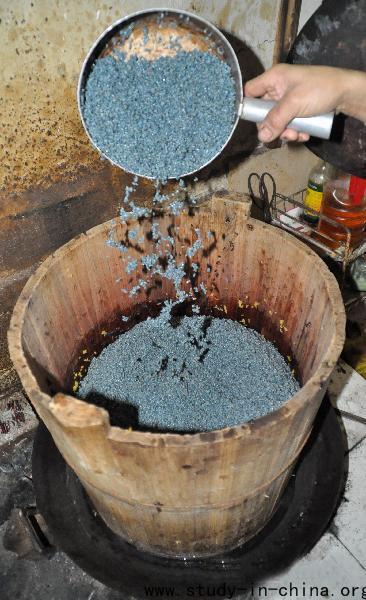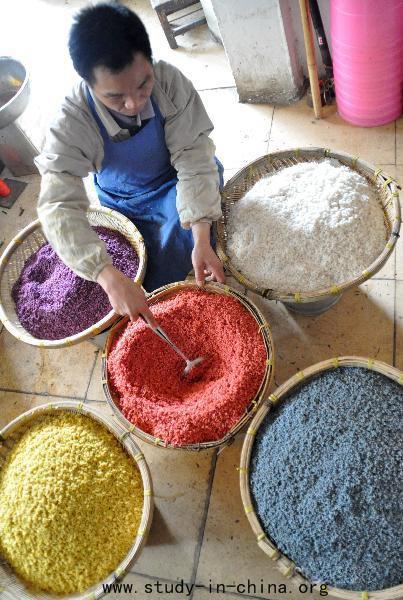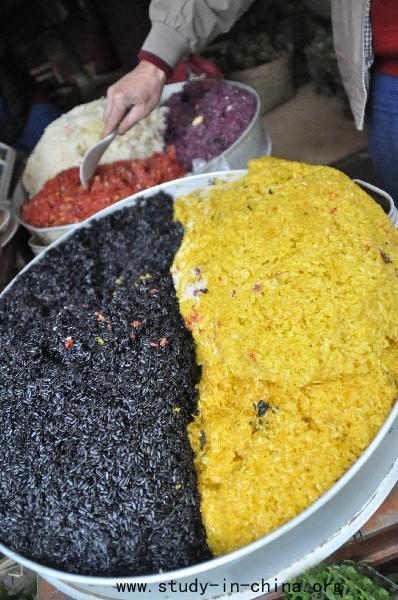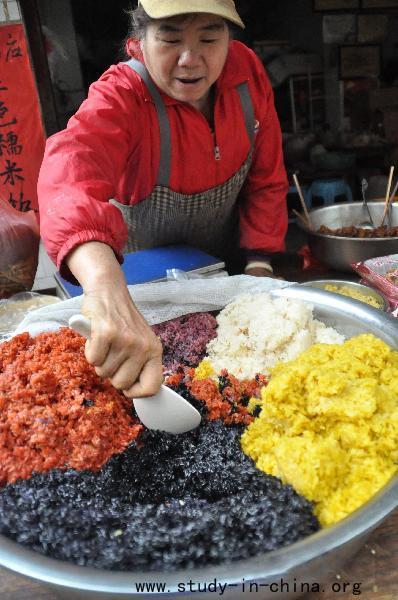more>>More News
Making Five-color Sticky Rice to Greet Qingming Festival
By admin on 2015-01-30

Five-color Sticky Rice is an important dish of almost
all ethnic minorities in the mountainous regions of Northern Vietnam. The name
of the dish comes from the fact that it has 5 colors.
However, different
regions can call this dish differently. For example, the Muong ethnic group
calls it Multi-color Sticky Rice; the Tay ethnic group calls it Five-color
Sticky Rice, some other ethnic groups call it Dam Den Sticky Rice, etc. On the
festival days or other special occasion, women find the leaves which produce
different colors to make this special and interesting cuisine.
In a
nutshell, the thing that creates the color of the rice is not chemical substance
but the natural leaves. The five colors of the dish represent the five elements
of life in the Vietnamese’s’ belief: yellow is earth, green is plant, red is
fire, white is metal, and black is water. People believe that the existence of
these five elements create the well-being of the heaven, the earth the human.
Thus, in order to make the desired color,they have to find and gather the exact
leaves. These leaves are then boiled before being put in a huge bowl with rice
to create different colors.
In the past, whenever they need to make
Five-color Sticky Rice, the women had to go to the forests to look for them.
Luckily, nowadays, five-color sticky rice has become not only a traditional
cuisine but also a delicious speciality that travelers from everywhere love. As
a result, people decided to grow the trees right in their garden and then sell
the leaves at the market. These naturally colorful leaves will then be used to
make the wonderful sticky rice that enchants everyone.

A retailer makes five-color glutinous rice in Nanning, capital of
southwest China's Guangxi Zhuang Autonomous Region. People of Zhuang ethnic
group have a tradition of making five-color glutinous rice during the Qingming
Festival, also known as Tomb Sweeping Festival that falls on April 5 this year.
Colored by steeped natural herbaceous plants such as day lily and maple leaf,
the five-color rice, represents a good harvest of the year.
A retailer makes five-color glutinous rice in Nanning, capital of southwest China's Guangxi Zhuang Autonomous Region.

A
retailer makes five-color glutinous rice in Nanning, capital of southwest
China's Guangxi Zhuang Autonomous Region.

- Contact Us
-
Tel:
0086-571-88165708
0086-571-88165512E-mail:
admission@cuecc.com
- About Us
- Who We Are What we do Why CUECC How to Apply
- Address
- Study in China TESOL in China
Hangzhou Jiaoyu Science and Technology Co.LTD.
Copyright 2003-2024, All rights reserved





 Chinese
Chinese
 English
English
 Korean
Korean
 Japanese
Japanese
 French
French
 Russian
Russian
 Vietnamese
Vietnamese
